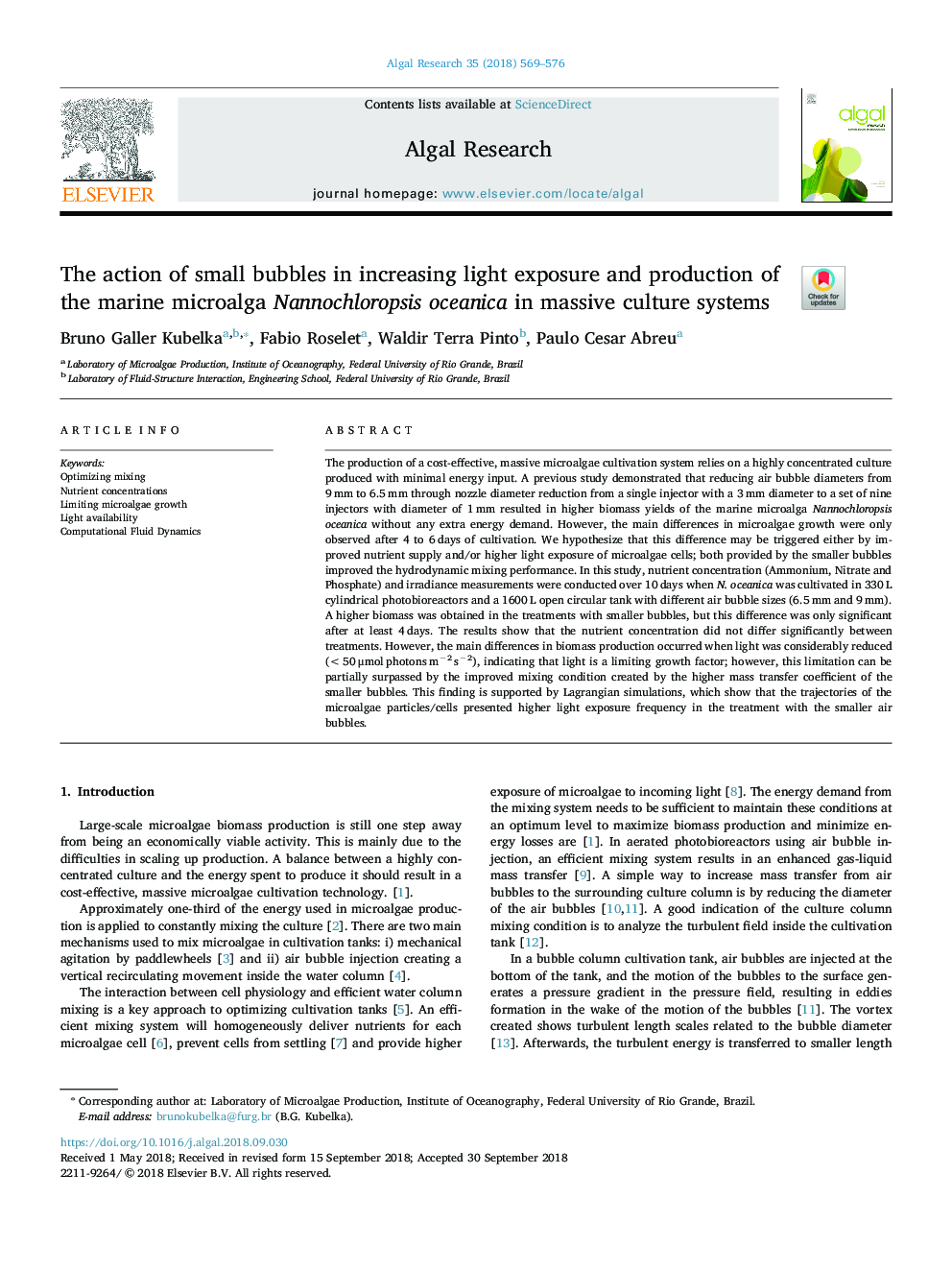| Article ID | Journal | Published Year | Pages | File Type |
|---|---|---|---|---|
| 11032761 | Algal Research | 2018 | 8 Pages |
Abstract
The production of a cost-effective, massive microalgae cultivation system relies on a highly concentrated culture produced with minimal energy input. A previous study demonstrated that reducing air bubble diameters from 9â¯mm to 6.5â¯mm through nozzle diameter reduction from a single injector with a 3â¯mm diameter to a set of nine injectors with diameter of 1â¯mm resulted in higher biomass yields of the marine microalga Nannochloropsis oceanica without any extra energy demand. However, the main differences in microalgae growth were only observed after 4 to 6â¯days of cultivation. We hypothesize that this difference may be triggered either by improved nutrient supply and/or higher light exposure of microalgae cells; both provided by the smaller bubbles improved the hydrodynamic mixing performance. In this study, nutrient concentration (Ammonium, Nitrate and Phosphate) and irradiance measurements were conducted over 10â¯days when N. oceanica was cultivated in 330â¯L cylindrical photobioreactors and a 1600â¯L open circular tank with different air bubble sizes (6.5â¯mm and 9â¯mm). A higher biomass was obtained in the treatments with smaller bubbles, but this difference was only significant after at least 4â¯days. The results show that the nutrient concentration did not differ significantly between treatments. However, the main differences in biomass production occurred when light was considerably reduced (<50â¯Î¼molâ¯photonsâ¯mâ2â¯sâ2), indicating that light is a limiting growth factor; however, this limitation can be partially surpassed by the improved mixing condition created by the higher mass transfer coefficient of the smaller bubbles. This finding is supported by Lagrangian simulations, which show that the trajectories of the microalgae particles/cells presented higher light exposure frequency in the treatment with the smaller air bubbles.
Related Topics
Physical Sciences and Engineering
Energy
Renewable Energy, Sustainability and the Environment
Authors
Bruno Galler Kubelka, Fabio Roselet, Waldir Terra Pinto, Paulo Cesar Abreu,
